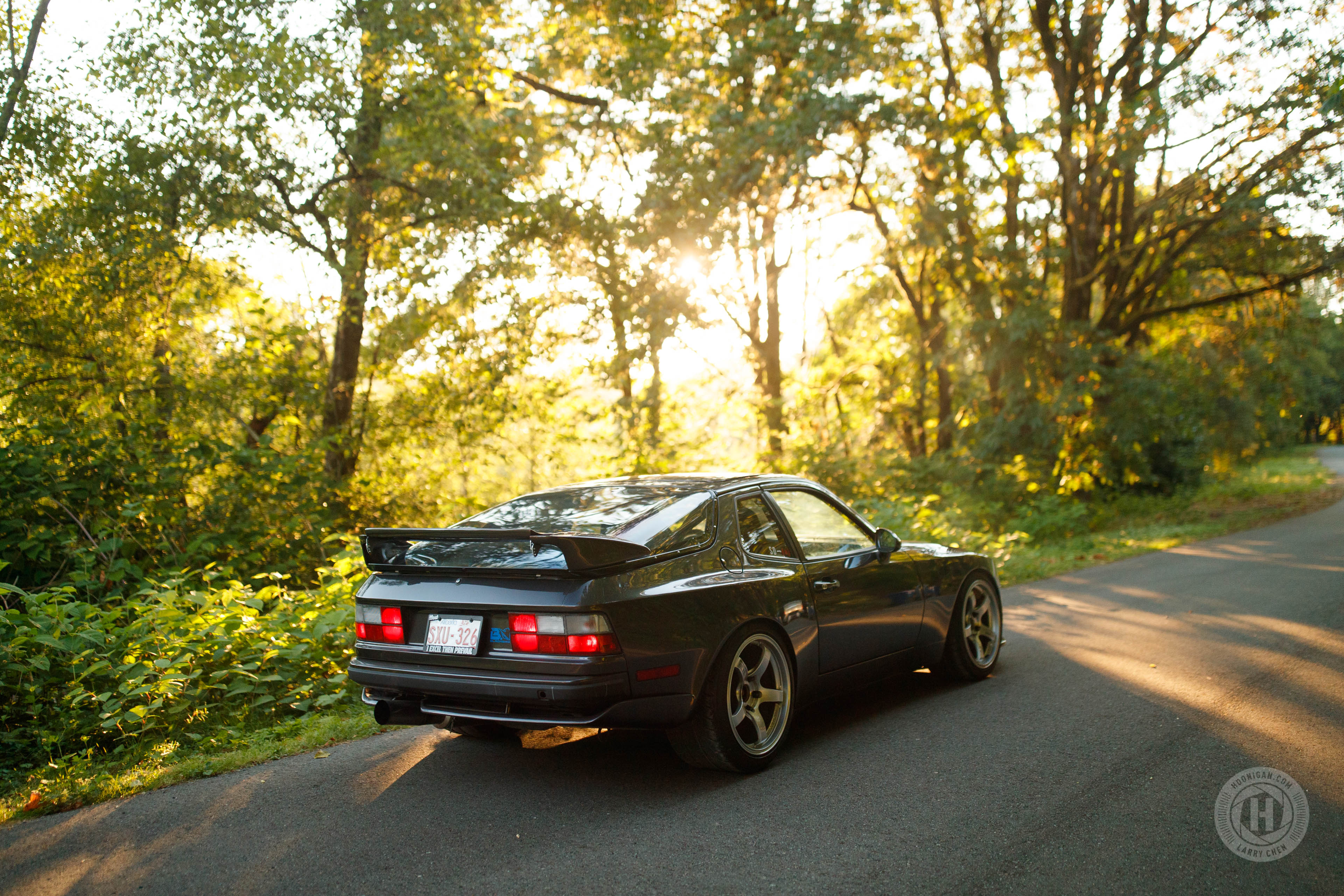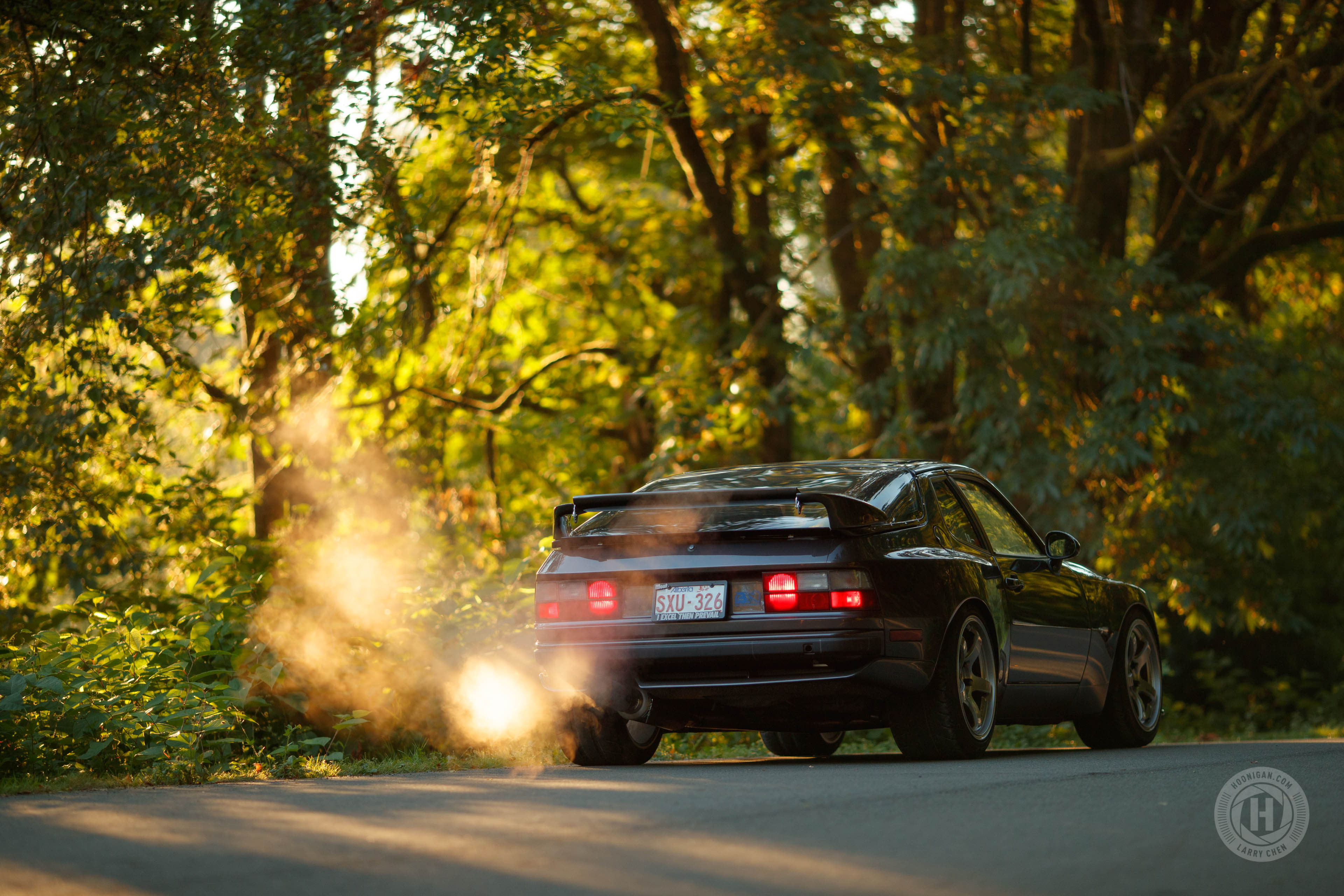According to the Goldilocks Principle, it's best not to have too much or too little of something and the right amount of anything is just right. While we live our lives with more of a too-much-is-never-enough attitude, we can appreciate how this Goldilocks girl may be onto something when it comes to cylinder counts and displacement. Matt Boulanger applied this philosophy to the search for a new engine for his 944. His quest led him to Mazda's 2.5-liter V6 KL-series. Never heard of it? Well, you're probably more familiar with this lump than you realize. The KL could be found in the Ford Probe GT, Telstar TX5 Ghia and Ghia 4WS, Mazda MX-6 LS, 94-97 626 ES and LX, and Millenia L. There was one more variant, the KL-ZE found only in Japan, and that’s exactly what Matt decided to drop into his Porsche.
 |
 |
 |
 |
The most interesting stat about the line of K series Mazda engines is their displacement, or lack thereof. These little engines that could never displaced more than 3.0 liters, the smallest being the 1.8-liter K8 used in the MX-3 and Eunos 500. It makes the K series the smallest production V6 in the world. With so little room for activities, it's that much more impressive that these mills utilize a DOHC, four-valve architecture to make about 130-horsepower in US trim (often referred to as the K8-DE) and 135-horsepower in Japanese trim (often referred to as the K8-ZE). The impetus behind the KL's development was to minimize Japan's vehicle road tax, which is based on engine displacement (suck it, government overreach).
 |
 |
The KL-ZE, KL-G4, and KL-DE are closely related with a 3.33-inch (84.5mm) bore and 2.92-inch (74.2mm) stroke for a displacement of 2.5 liters. The ZE produced the most power of the three at 200 horsepower and 165 lb/ft of torque while the DE and G4 made between 164- and 174 horsepower.
The DE and ZE used a distributor system while the G4 utilized Ford’s Electronic Distributorless Ignition System (EDIS). In all three engines, Mazda used the Variable Resonance Induction System (VRIS), a similar system to the Dual-Stage Intake found on the 92-95 Ford Taurus SHO and the Toyota T-VIS found in the 4A-GE.
Essentially, there are two intake runners – one with a shorter and larger diameter and the other with a longer and smaller diameter. The longer runner is used at idle to 6250rpm on the DE or 6800rpm on the ZE to increase intake air velocity. At that point, the shorter runner's butterflies open to allow more intake air mass to feed into the cylinder rather than velocity. Mazda further tunes the intake paths to utilize Helmholtz resonance (science, yo!) to increase intake pressure and create a low-pressure supercharger effect to fill more air into the cylinder.
 |
Another feature of the KL is its rigid split-case engine block design (normally you pay extra for that sort of action). Nearly every other engine utilizes a block design that employs an oil pan and either a set of main caps or main girdle, separating the crank case area from the rotating assembly. The KL integrates the entire lower half of the crankcase with the main cap girdle. This creates an extremely rigid engine block and crank retainer along with the use of four main cap bolts.
However, there is a small (read: not so small) issue in using the KL in a 944 or any RWD application. There aren’t any bolt-in bellhousing solutions compatible with the transmission. It was something Matt had to overcome when he decided to remove his built and modified 2.8-liter based on Porsche's factory 2.5-liter inline-four cylinder engine.
Now you might be wondering why Matt removed his built engine, since the stroked lump made at least 170- to 190 horsepower. Sadly, his built 2.8-liter blew a head gasket during a track day (red mist to red line?) damaging the pistons and cylinders beyond the point of a rebuild. Matt needed a new engine and guess where his research led him? If you said, "Mazda's KL," then we'd have no choice but to say, "Check out the big brains on you!"


 |
Matt still needed a solution to mate the torque tube leading to the Porsche transaxle gearbox. “Being an uncommon engine choice that never came in a RWD configuration,” said Matt, “pretty much everything attached to the engine is something I made. Intake and exhaust manifolds, the adapter plate, flywheel and mounts are all the results of a lot of late nights.” We typically ascribe this design to the late nineties C5 and above Corvettes and most modern front-engine supercars. Porsche's 944 used this design way back in 1982, in a platform that wasn’t considered a luxury car in its day.
To make the KL-ZE work in the Porsche 944, Matt had to create a custom adapter plate for the torque tube housing. He also needed to create a custom oil pan with a pickup and engine mounts to help the KL clear the front crossmember. Prior to dropping the engine into the 944, Matt warmed over the KL to make more power and increase reliability for the Borg Warner EFR9174 turbocharger.
In the engine end of the torque tube housing, a custom flywheel is used with a Spec Clutch Stage 2 944 pressure plate and friction disc. The transmission crossmember is reinforced with a 9products semi-solid mount. A Shark Motorsport shifter shortens the gear throws of the 944 S2 transaxle, which has a shortened final drive and taller fifth gear.
Inside the block are a set of CP Pistons hung on K1 connecting rods, which were all balanced to achieve the 8.5:1 compression ratio. The heads were ported before a set of Colt Cams and Interprep valvetrain were installed. Matt also fabbed up the custom-made intake manifold to accommodate the RWD conversion and BBK dual 62mm throttle bodies. The engine is controlled by a Syvecs S6 ECU. Custom made, Swaintech-coated exhaust manifolds blend into a single outlet for the turbo. Matt even made the custom Griffin intercooler. A full custom 3.5-inch exhaust system is made from stainless steel at the downpipe, but switches to titanium from the mid-piping all the way to a Rein Hard muffler. A pair of Setrab oil coolers keeps the oil cool when things heat up.
 |
 |
The 944's Brownstone color is sourced from no less than a Lexus LFA, shot by Stampede Collision in Alberta, Canada. The front and rear bumpers and 968 Turbo RS spoiler are from Germany's FSH. The hatch glass was replaced by a tinted Lexan piece by Plastics4Performance. The headlights are custom made by Matt while the mirrors and door handles also come from a 968. The wheels are Yokohama Wheel Advan Racing TCIII pieces in 18x10 +42 front and 18x11 -60 rear with Nitto NT05 tires in 265/35R18 and 285/35R18, front and rear.
The brakes behind those Advans have also been improved with a custom dual Wilwood master cylinders with balance bar and remote reservoirs. Because of the dual master setup, a power brake booster won’t work so the pedal ratio (total length of the brake pedal from its fulcrum point against the placement of the brake balance bar attachment) had to be changed. The front brake calipers are from a 928 GTS with 330mm Porsche rotors while the rear calipers and rotors are the original 944 setup. Both front and rear calipers are treated to Goodridge braided stainless lines.
 |
 |
This 944 is both a street and track day car, so it has to have a functional but good looking stance, which is accomplished with a set of KW Suspension V3 coilovers with Lindsey camber plates in the front strut towers. Porsche M030 sway bars control roll and their suspension bushings help stiffen the chassis. If you’re expecting feather light steering effort, forget it as Matt converted his to manual steering (earning him 10 extra man credits).
 |
The interior is a mix of business and comfort with Recaro Pole Position seats and Schroth Harnesses for both Matt and his lucky passenger. They are situated in front of a custom made Chromoly half cage that also has a harness bar for the Schroth belts. A MOMO steering wheel gives Matt good road feel, especially with the non-power assisted rack. The dash cluster gauges have been re-scaled to read up to 300kph and 8000rpm over the stock 160mph (257kph) and 6400rpm, but Matt can also can monitor boost and oil temperatures thanks to the STACK pieces under the head unit in the center console. A New-Old-Stock (NOS) 935 boost knob now functions as a map switch, which he can change without programing with the S6 ECU.
At this point, you might be asking yourself, “Why a 944?” Well, it goes back to Matt’s childhood. “I nearly grew up in the back seat of a 944,” he explained, “My dad built a very quick 2.8L car for a friend/customer and he frequently had the car for testing or just to drive.” It’s also a great starting point from the get go, “The platform is pretty great - the transaxle setup gives great weigh distribution (mine actually has a 51% rear bias). The chassis is quite stiff for the era, and chassis dynamics are some of the best there are.”
We're certainly interested to follow the development of this car as Matt continues to improve the setup as a whole. However, the main job, and the toughest one, of fitting a KL-ZE into a Porsche 944 transaxle setup is finished and the car is running on its own power. His unique swap might even earn the KL some newfound popularity after this. At the very least, it's refreshing to see one less LS-swapped 944 in the wild. Fight the power, Matt.
























































